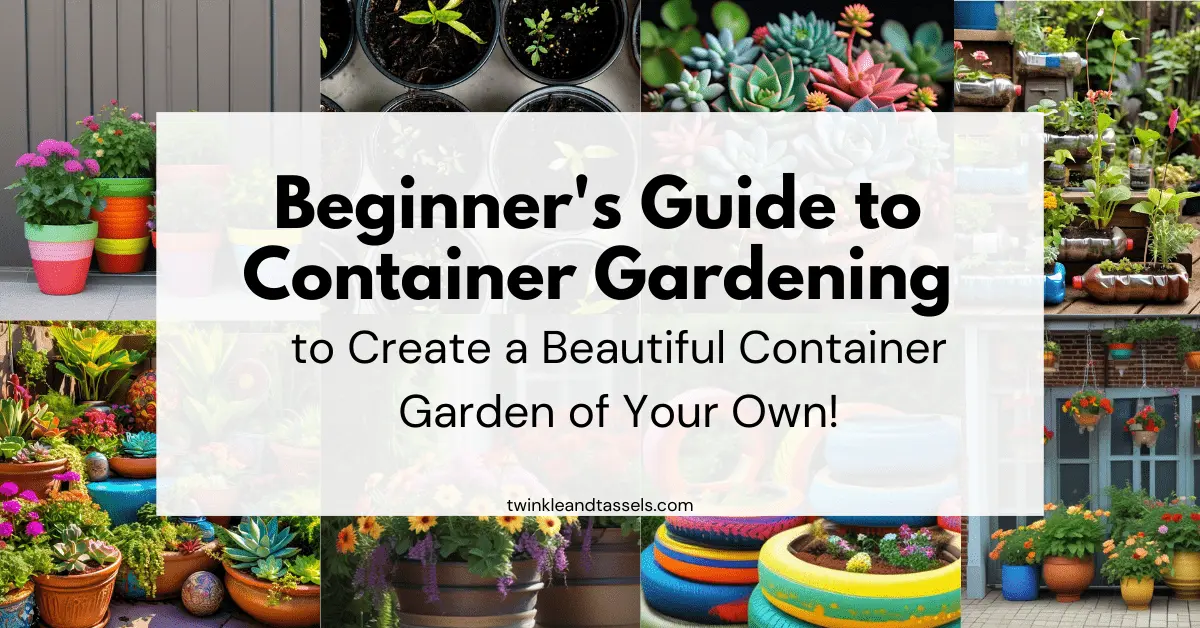Who wouldn’t love growing a garden from scratch and maintaining it like their own child?
The hobby of gardening is freshening and requires a lot of patience.
However, not everyone with this passion is blessed with a piece of land they can call their garden. This is how the concept of container gardening came into being.
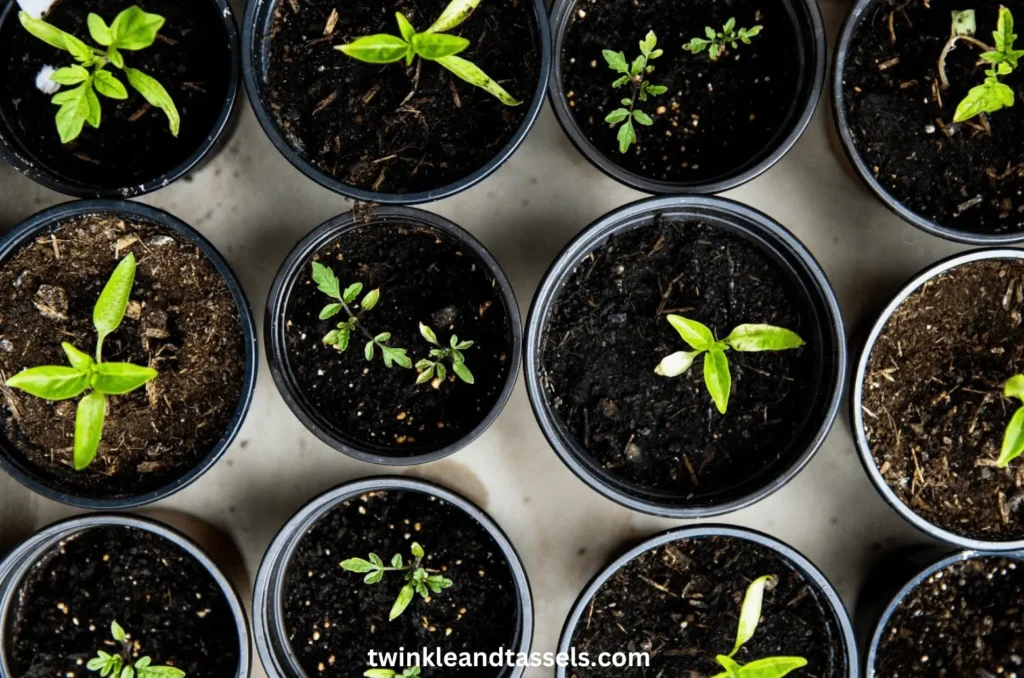
This post may contain affiliate links. This means I will earn a small commission if you make a purchase using my affiliate link without any extra cost on you.
What is Container Gardening?
The term is pretty self-explanatory. You grow plants in containers.
These containers can be anything that can hold soil and have good drainage.
A plastic bottle cut-out, a wooden flowerpot, or any container that you think will hold your desired plant.
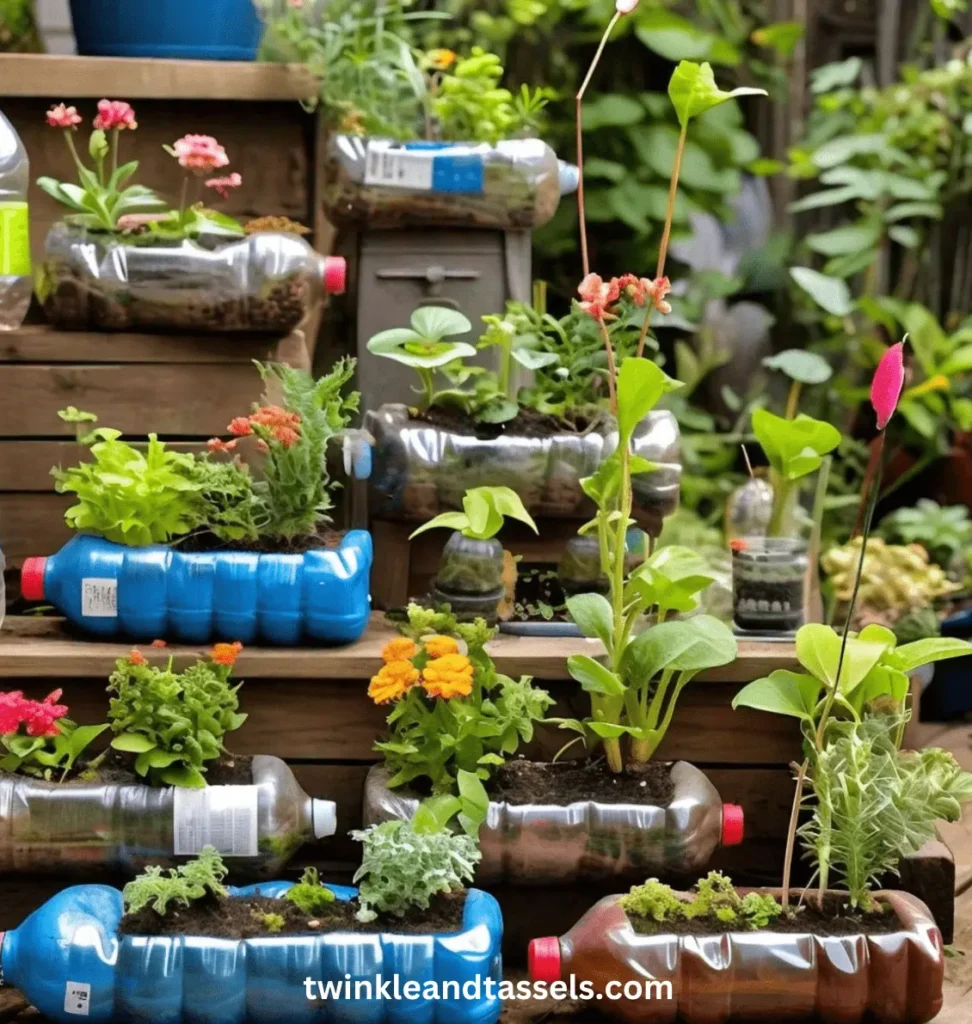
Here are a few things you need to consider before buying containers for your garden.
You should know what type of plant you want to grow in which container. Flowering plants can grow easily in small containers, but you need to have relatively large containers for vegetables.
Choose the material of the container wisely. Wooden containers are inexpensive and look great, but they will start to rot after some time.
Some plants require depth for their roots to grow. As mentioned above, you should know the kind of plant you want to grow and then choose the size and shape that will work for them perfectly.
If you are using a DIY container, make sure that you punch enough holes in the bottom of the container for proper drainage. Lack of drainage in plant containers can result in wilting plants.
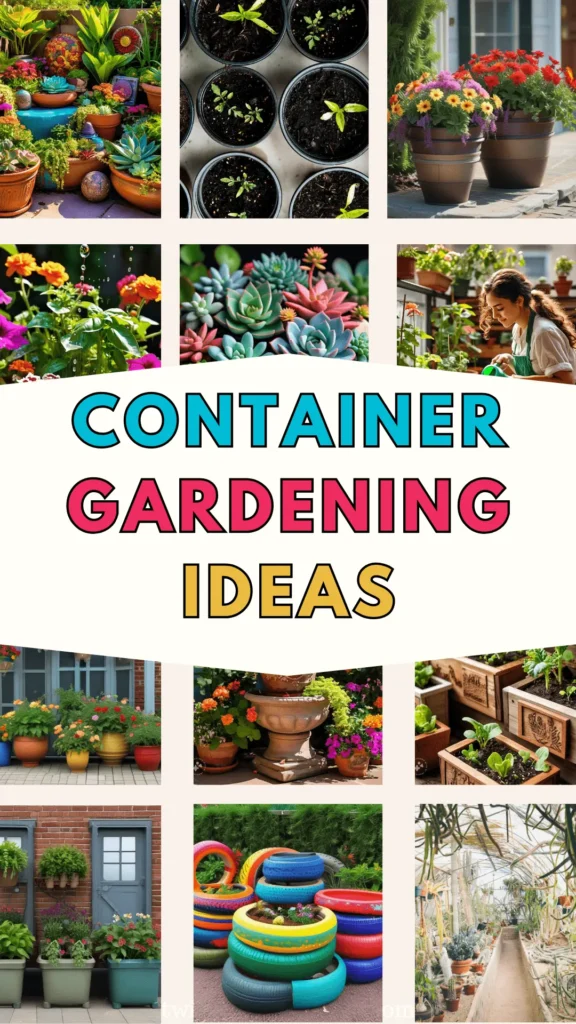
Things to Consider for Container Gardening
Choosing the right type of container for your plants is important, but that is not the only thing you should be careful about.
Let’s take a look at the factors that contribute to your container gardening experience and how you can do it perfectly:
Soil
Besides containers, you need to know the type of soil you will use.
You cannot just take soil from outside and dump it into the containers in the hope that healthy plants will grow.
Why, you ask?
Well, because the soil from outside carries a lot of pests and insects that can eventually harm your plants.
You want to have healthy potting soil to avoid these gardening problems.
Light
Yes, all plants do photosynthesis using sunlight, but not every plant needs to be placed in direct sunlight all day, every day.
You need to research the requirements of each plant and place them in and out of the sun accordingly.
Some plants grow better under shade, so you’ll have to arrange some kind of overhead shade that does not look bad in your gardening theme.
Water
Containers evaporate moisture way more quickly compared to a garden bed.
You need to water your plants regularly, so they don’t get dry.
But too much water can also be bad for your plants.
You can get self-watering pots that pour in just the right amount. You’ll just have to fill in the container and leave the rest in the pot.
Temperature
It is crucial to notice the temperature your plants are receiving.
Too hot? Your plants will dry out soon as the containers can easily heat up.
Too cold? The frost will wilt your plants overnight.
You will have to be extremely cautious of the temperature your container plants are getting and how to optimize it for better growth.
Fertilizer
Like any other plant in a regular garden, your container plants also need proper nutrients to grow.
But unlike garden beds, nutrients from a container seep out more quickly with water.
Consider using a slow-release or liquid fertilizer for your potted plants to retain them for a long time.
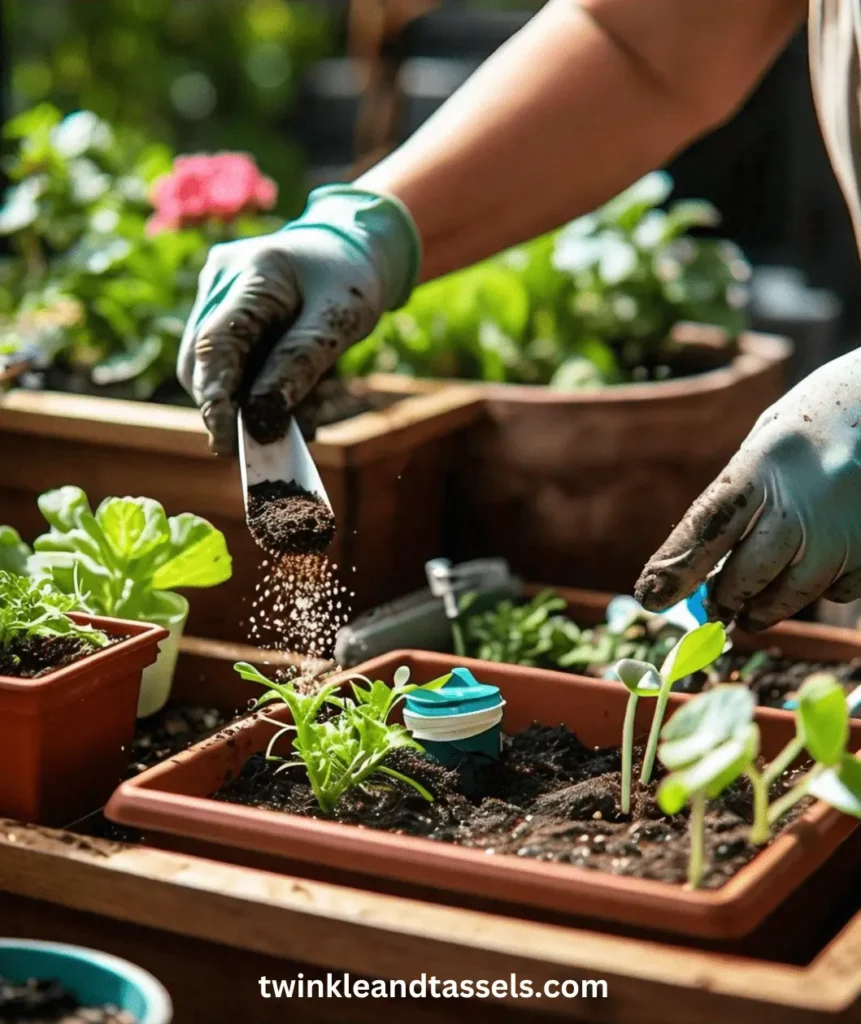
What to Grow in a Container Garden?
So far, you have known the essentials of growing a container garden. It is time for us to ponder upon the next question – what should you grow in your container garden?
The answer to this depends on your preferences and priorities.
Because you can grow a vegetable garden just as well as a flower garden in your containers.
If you simply want a patio or balcony with greenery, you may consider growing flowers and leafy plants like roses and asters.
On the contrary, if you prefer going organic and growing your veggies, that can also be sorted in your container garden.
Here’s a list of things you can grow in your container garden and some factors you should consider for each:
Succulents
We all love the low-maintenance thorny plants.
They are easy to grow and look great anywhere.
Succulents like aloe vera can be used for herbal medicine and skin care.
Others, like cacti, look great anywhere.
However, succulents can store water well. They do not need to be watered so often. Let the soil dry first before pouring in more water.

Small Trees
Sounds interesting, right?
Bonsai is not the only small tree that can grow in a pot.
Dwarf conifer, lemon, Japanese maple, and olive are some of the trees that you can grow in your container garden.
These trees may be small, but they will need relatively larger containers for proper growth.
With enough sunlight and water, these trees will grow and be with you for a long time.
Climbers
Climber plants look gorgeous even from afar.
They nicely fill up the space they are given and even work as a privacy screen.
Climbers like wisteria and bougainvillea grow beautiful flowers.
If you want a container garden to make your space look pretty, climbers are your best choice.
However, you will need to install extra support for them to grow in a certain path instead of spreading everywhere.
Leafy and Root Vegetables
Who says you cannot have homegrown vegetables in a compact space?
You can grow leaf edibles like kale, mint, parsley, and other microgreens perfectly well in your containers.
They need partial to full sun and adequately moist soil to grow.
Root vegetables, on the other hand, require deep containers for proper root development.
Once you have taken care of these factors, you will be cooking organic vegetables in no time!
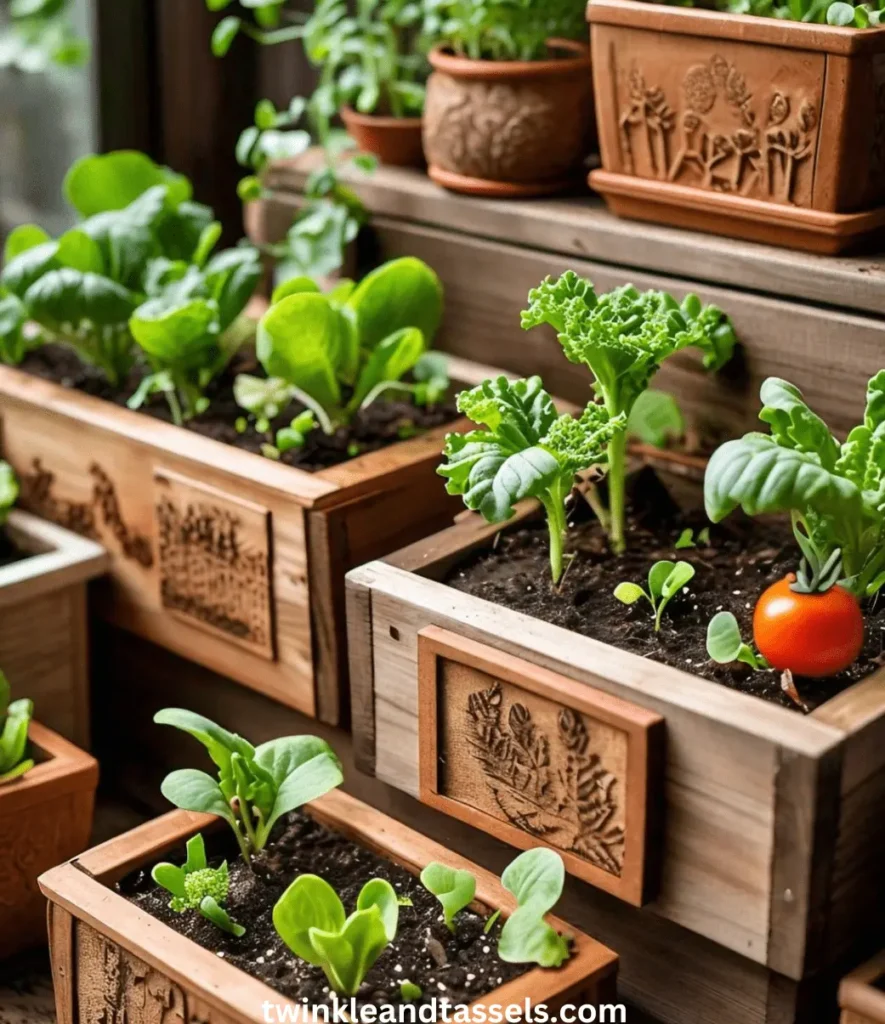
Fruits and Berries
Who doesn’t love the sight of fresh fruit hanging from the plants and the smell of sweet nectar spreading all around?
You can get exactly the same imagery in your container garden.
Fruits like strawberry grows in small shrubs and trees.
They require rich, well-draining soil for healthy growth.
You may also like to read,
Tips and Hacks for Container Gardening
All the basics of container gardening have been mentioned.
And I know you think you are ready to start a container garden tomorrow.
You just have to buy containers and soil, right?
Wrong!
There are things that need to be addressed and acknowledged before you jump into the adventure of container gardening.
While it is easy to start a container garden, maintaining it can be a bit of a hassle.
Enlisted below are a few things you can do to ensure your container garden remains fresh for a long time.
Clean the plant containers at least once every year. Do this with a 10 percent bleach solution with water. This will eliminate fungus and micro pests.
Make sure that your containers have drainage holes in the bottom for proper water drainage.
If they don’t come with holes, drill some yourself. Use a duct tape and drill through it so that the pot does not crack.
To help soil retain moisture, use mulch on the upper layer of the soil in large containers.
Use a good quality potting mix for your plants. Heavy soil retains water and easily gets infected by pests.
Use slow-release fertilizers on the top layer of the soil. They lose their nutrients slowly, so the soil is not depleted quickly. Fertilize your plants every two weeks.
Overwatering can cause serious issues for your plants.
One way to check moisture in the soil is to stick your finger in two knuckles; if the soil feels dry, it needs more water.
Make sure that each plant is getting the right amount of sunlight.
Not all plants need full exposure to the sun – some need partial sun, and some need shade.
Remove dead flowers and leaves from the pots regularly.
Place compatible plants together for better growth and to avoid pests.
Use pesticides as your local plant pathologist advises in case of pest infestation.
You may also like to read,
Container Garden Ideas for Inspiration
Here are some container garden ideas for you to get inspired.
Vegetable Container Garden in Balcony
Woven Baskets for Container Gardening
Vertical Container Garden
Compatible Plants in Same Pot
Front Porch Colorful Container Garden
Container Kitchen Garden
Hanging Baskets for Container Garden
Small Balcony Container Garden
Corner Container Garden
Wrapping Up
Container Gardening is a great way to enjoy the blossom season or organic vegetables even if you have limited space.
It is a great option for people who love gardening but are short of space.
Container garden is a beautiful way to decor balconies, patios and porches.
This post was all about how to start a container garden and what factors need to be taken cared of before starting a container garden.
Let me know in comments, what type of container garden do you prefer and want to have for yourself.
If you found this post helpful, don’t forget to pin this post and share with your friends.
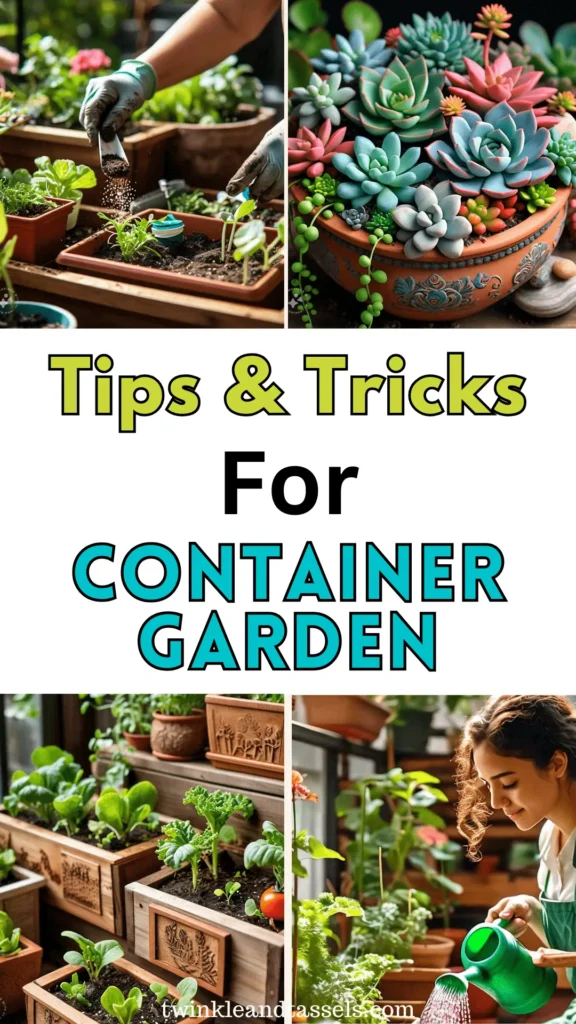
Also read,

I am Sidra, a home decor enthusiast who loves transforming spaces with creative ideas, practical organization tips, and DIY home decor crafts. On this blog, I share inspiring home decor ideas and organizing tips to help my readers make their homes beautiful and functional. Join the journey to create a stylish, organized, and personalized living space!

